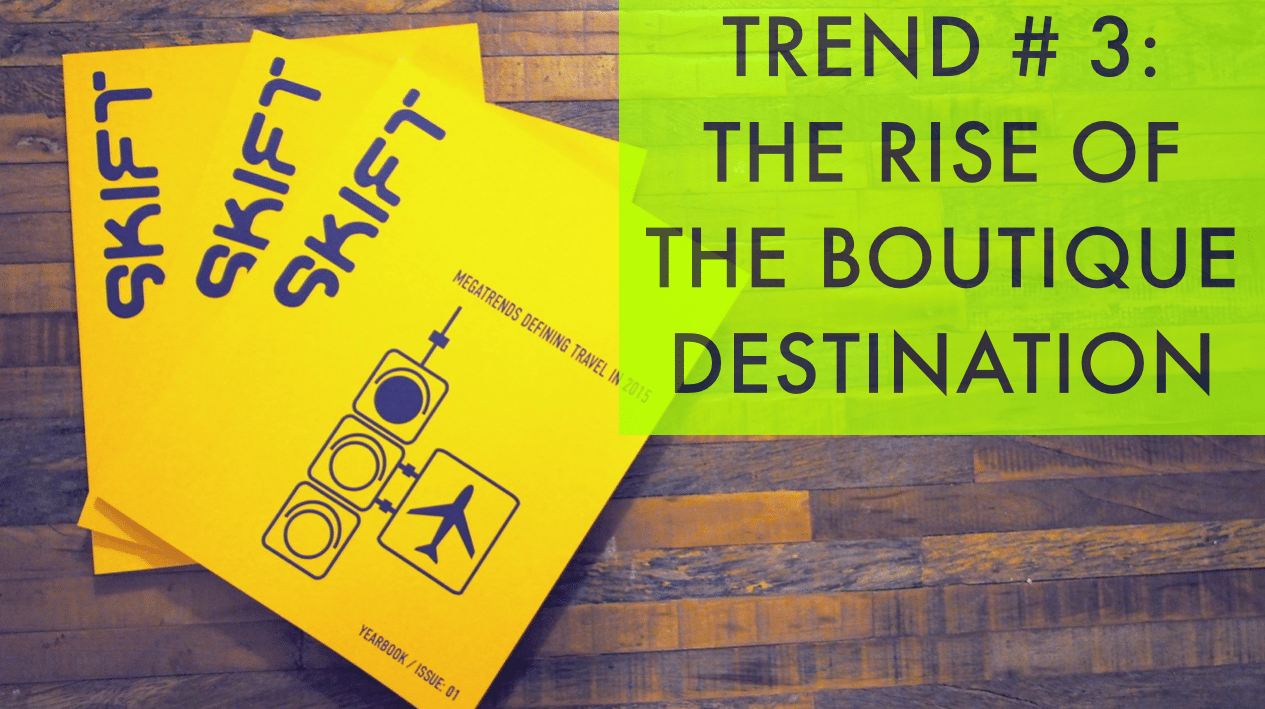Skift Take
Smaller destinations are finding smart ways to market what they are, not what they think others want them to be. And they’re finding success reaching visitors outside of traditional media and advertising.
Earlier this month we launched our first ever magazine, “Megatrends Defining Travel in 2015“, where we identify the global trends in travel in 2015 and beyond, and focus on three emerging key themes: Mobile. Seamless. Experiential. Below is an extract from the third trend.
Sure you’ve been to New York City, but what about Lexington, Kentucky?
The emphasis on local, unique experiences that’s led many consumers to eschew big brands for boutique or bespoke products is having a similar effect on how people choose vacation destinations as well as how cities and regions market themselves. When once destinations chased the same trends found in big cities — we have a Chanel store, too! — they’re now taking a long look at what they have to offer that’s different.
It’s a reverse of the Bilbao effect where second- and third-tier cities built big showpieces to attract tourists, and then crossed their fingers and hoped they’d show. What we’re seeing now is a search for the authentic in a world that too often seems homogenous and already discovered. The movement is opening more destinations to visitors, and doing so without forcing the places to mimic the charms of top destinations.
Providence, RI doesn’t have to out-Boston Boston, it can call on its richer collection of early American architecture, booming culinary scene, and WaterFire attraction to set it apart. Smaller towns such as Bentonville, AR and Louisville, KY have seen small retail establishments pop up around their outposts of 21c Museum Hotels.
In most cases, it’s a matter of local tourism boards taking the lead from local businesses that are re-thinking how they can market themselves.
In Europe, where big destinations such as Paris and London are over-touristed, visitors are turning to alternatives. They’re checking out the rich sports legacies of a Manchester, England, or hunting down unique shops and one-of-a-kind finds in fashion-focused Antwerp, Belgium. Cities with a history of conflict like Belfast are turning a violent past into a storytelling opportunity while also giving visitors many other reasons to stick around.
Even big destinations like New York City are getting into the boutique game, pushing visitors out into boroughs once completely ignored by the tourism board so that they can marvel at the hipsters of Brooklyn and the ethnic diversity and gourmet pleasures of Queens.
For these destinations, it’s not about big campaigns on billboards or glossy magazines. It starts on digital, and if the experience is good, it continues there once the traveler has returned. To reach possible visitors, destinations are turning to content marketing and local influencers to make their case.
We see this in Twitter video advertisements from places such as Visit Myrtle Beach and YouTube videos encouraging travelers to Lexington, KY to #ShareTheLex across social media. As finding something new becomes a challenge, travelers themselves broadcast their unique conquests on Facebook and Instagram, and continue the cycle of discovery and exploration that makes what can make the been-there-done-that nature of traditional travel new again.
We want to thanks our magazine sponsors Virgin Atlantic, Amadeus and Egencia for making this possible.
Get Skift Research
Skift Research products provide deep analysis, data, and expert research on the companies and trends that are shaping the future of travel.
Have a confidential tip for Skift? Get in touch
Tags: megatrends 2015, Travel Trends

